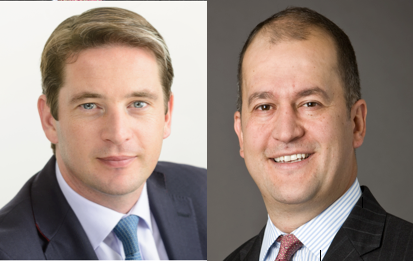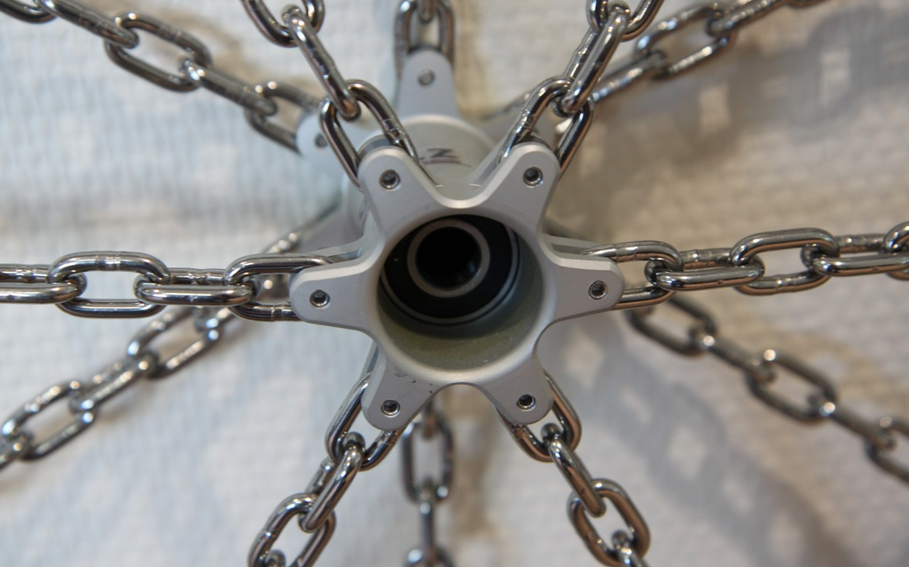Nick Clay (Newton IM): “We Try to Clash the ‘Fear of Missing Out’, What We Take Away Is What Matters Most”
| By Meritxell Sedo | 0 Comentarios
According to Nick Clay, leader Portfolio Manager of the BNY Mellon Global Equity Income Fund, in terms of market volatility, 2019 will be a similar year to 2018. At the end of last year, the hawkish tone of the speeches and press conferences of the US Federal Reserve was largely responsible for the sell-off of the market. Conversely, the strong rebound at the start of this year, has been backed on the news that the Fed decided to stop its rate hike cycle.
“The central banks may be returning to some sort of stimulus. The problem is that interest rates are peaking when they are so low, about a 2% interest rate in the US, 0% in Japan and -0,4% in the Euro Zone. This is telling us that we are in a very low growth world, that demographics are against us and that technology and disruption are not adding to productivity to the economy. It should not be much of a cause for celebration. So, I was a bit amazed by the rebound in markets, but I was not surprised. Because after 10 years of Quantitative Easing, both financial assets and markets have got used to central banks feeding them with monetary stimulus, and the fact that central banks are there to feed them again means that markets go up. At this moment, the market just assumes we are returning to 2017, when we were in a Goldilocks market” explained Clay.
Fiscal spending and populisms
Now, Modern Monetary Theory’ advocates posit that economies can be stimulated by spending on activity and infrastructure and that new money can be printed to pay the bills. And they see nothing wrong with this theory, while the equity portfolio manager at Newton Investment Management finds it slightly incredible. But, in Clay’s opinion, it seems that this is the new central theory and certainly populist governments will seize upon it.
“In the past, populist governments got in to power on false promises. Once they were in power, they realized they could not deliver, mainly because there was no funding. But this time, they are going to have access to the funding, and they are going to start to deliver in the initial promise, which is going to be the fiscal spending. Although there will not be economic growth or prosperity, because it will be spent on projects that are not productive, it would certainly get some spending in the economy, allowing the populism government to stay in power for longer than anyone may think. Trump may be a very good example.”
The buy and sell disciplines
At the BNY Mellon Global Equity Income Fund, all new holdings must have a prospective yield greater than the FTSE World Index yield, which is currently at a level of 2,6%, and any holding whose prospective yields falls below the FTSE World Index yield will be sold.
An example of a stock recently bought in the portfolio would be Cisco Systems, who has a prospective yield of 3,5%. Also, Cisco has 20% of its market capitalization in cash, and it offers almost double-digit free cash flow yield of 9%. “We need to establish if all the headwinds that could be faced by the company have already been priced in by the market. We also need to establish whether Cisco can and will survive.”
As for the example of a recently sold stock in the portfolio, in the first half of 2018, the strategy sold Ralph Lauren. “When we bought Ralph Lauren at the beginning of 2017, the company needed to shrink its business to make it profitable again. They had overdistributed their products and lost control of pricing. Their margins were under pressure, however, the brand itself was not damaged. They were able to shrink their distribution sales lines and the amount of product in the market, regaining control of pricing and improving their margins. Their stock price recovered, and now its valuation shows that the firm needs to grow to make money, which they may well do, but that is a different investment thesis that depends on the consumer wanting to buy their products.”
The bountiful and broken buckets
The strategy distinguishes between the bountiful and broken buckets. The philosophy, the investment themes, fundamental analysis and the buy and sell disciplines are applied to the ‘bountiful’ buckets, which contains companies that are statistically attractive, whereas the broken bucket comprises statistically unattractive firms.
Investing is a statistical endeavor, meaning that, as the academic evidence shows, even the most successful fund managers in the world, only get their investment thesis right 52% of the time, showing how random is the industry. With such a surprisingly low rate of success, one would wonder how fund managers are able to make money. The answer, according to Clay, is that the 48% of the time that their investment thesis goes wrong, fund managers do not put that much money in the first place because they understand the risks of that investment. While the in other 52% that their investment thesis goes right, they got more money in.
“Instead of allowing us freedom to invest anywhere, we restrict the areas of the market where we search for opportunities. We try to clash the ‘fear of missing out’ approach and we embrace the Michelangelo approach, what we take away is what matters most. It is not enough to buy high return on investment capital companies, we need to buy these companies when they are out of fashion, when something is going wrong or either being presented cheaply to us. This may sound like an obvious thing to do but is something very difficult. Because when something is going wrong is uncomfortable to buy these companies. A lot of work is needed to understand if these companies are going wrong because they are broken, at which point you would want to avoid them, that would be the case of Nokia or Kodak, or if it is just a temporary problem, and therefore an opportunity,” he explained.
An example of a growth company that is temporarily falling out of favor, would be Qualcomm, the 5G provider is embroiled with a lawsuit with Apple and China has banned them from making an acquisition. All these problems weight on its share price, but Qualcomm still is a very good business and still has a high return on invested capital. The decision here, according to Clay, is to decide whether the lawsuit with Apple is going to destroy its business or whether the company would be able to survive without Apple.
Another example would be companies that are currently ex-growth companies, but they still are high return companies. That would be the case of Pepsi Co, a company whose power and durability have been underestimated by the market and that is temporarily undergoing a slowdown in its growth.
“Pepsi has been under a lot of pressure because of the fear and concerns about sugar taxes and sugar being the new tobacco. When the reality is that Pepsi Cola, the fizzy drink, only represents 10% of Pepsi Co, the company. Their snack business and distribution network are their most valuable assets. Pepsi is 14,5 times larger than the number two snack player in the market, which is Kellogg’s. The investment thesis that you are buying with Pepsi is that, in the future, regardless of the eating preferences of the people, Pepsi Co will be the firm distributing food to us, because they dominate the distribution channel.
Similarly, when we bought McDonalds in our portfolio, we bought the value of their property portfolio and their distribution business, with which they can attend to people’s demand for a healthier diet.
When a company has shown high return on invested capital and growth multiples but only as the result of a temporary fad, as it was the case for Crocs or Moleskine, or when a company’s returns can’t remain stable because their business is shrinking so fast, as it was the case for Kodak or Nokia, then the company belongs to the broken bucket category”.
Income as protection
Total return is made up on two things, capital appreciation and income. The Newton Global Equity Income Fund harnesses the ability to compound dividends year over year and it also delivers a less-volatile returns series.
“In the long term, the dividend growth rate compounds in the returns and, over time, the power of compounding dominates the total returns. The other thing that is important to notice is that income is received every year, meaning that it is sustainable and that is going to deliver a return that is less volatile than the market”, he concluded.








